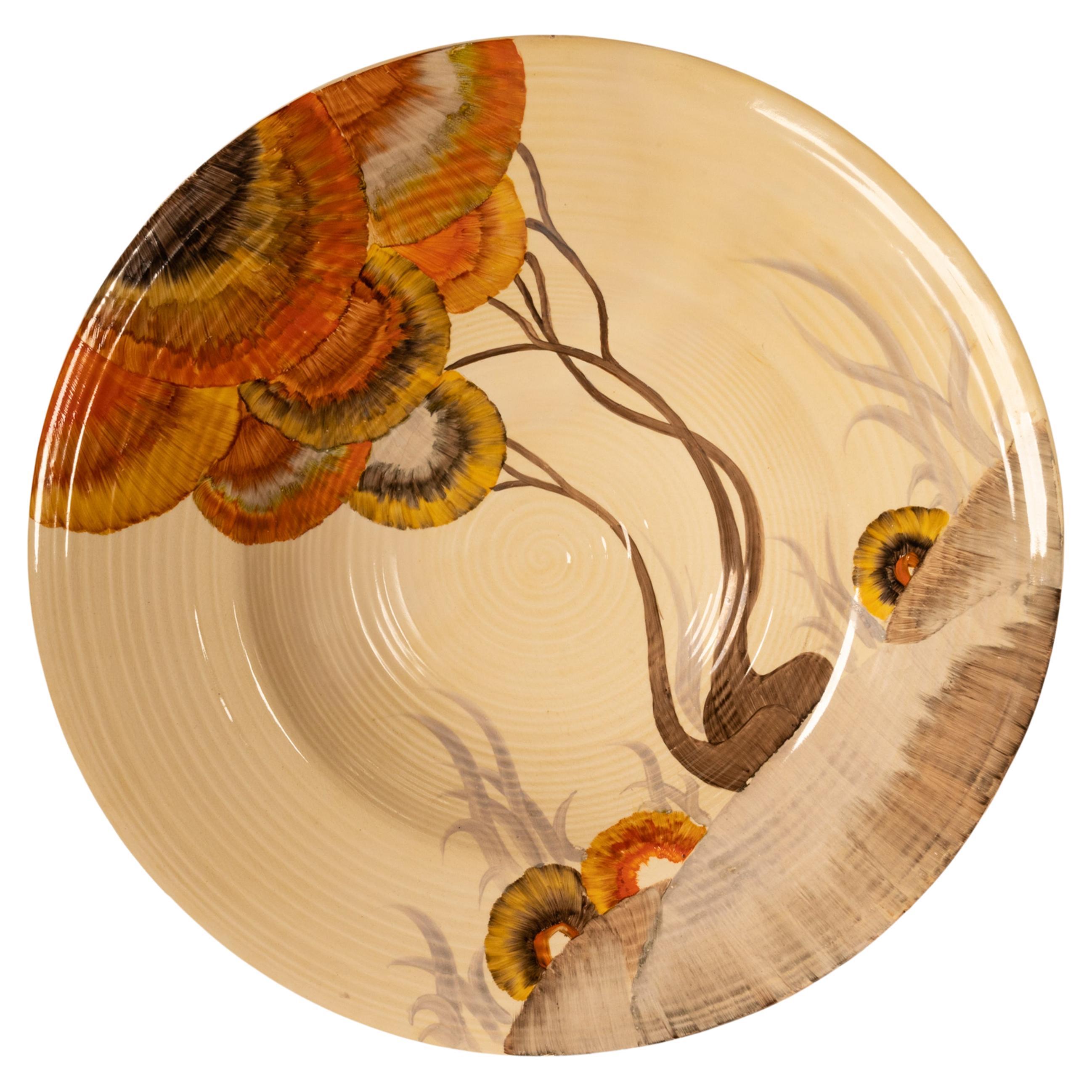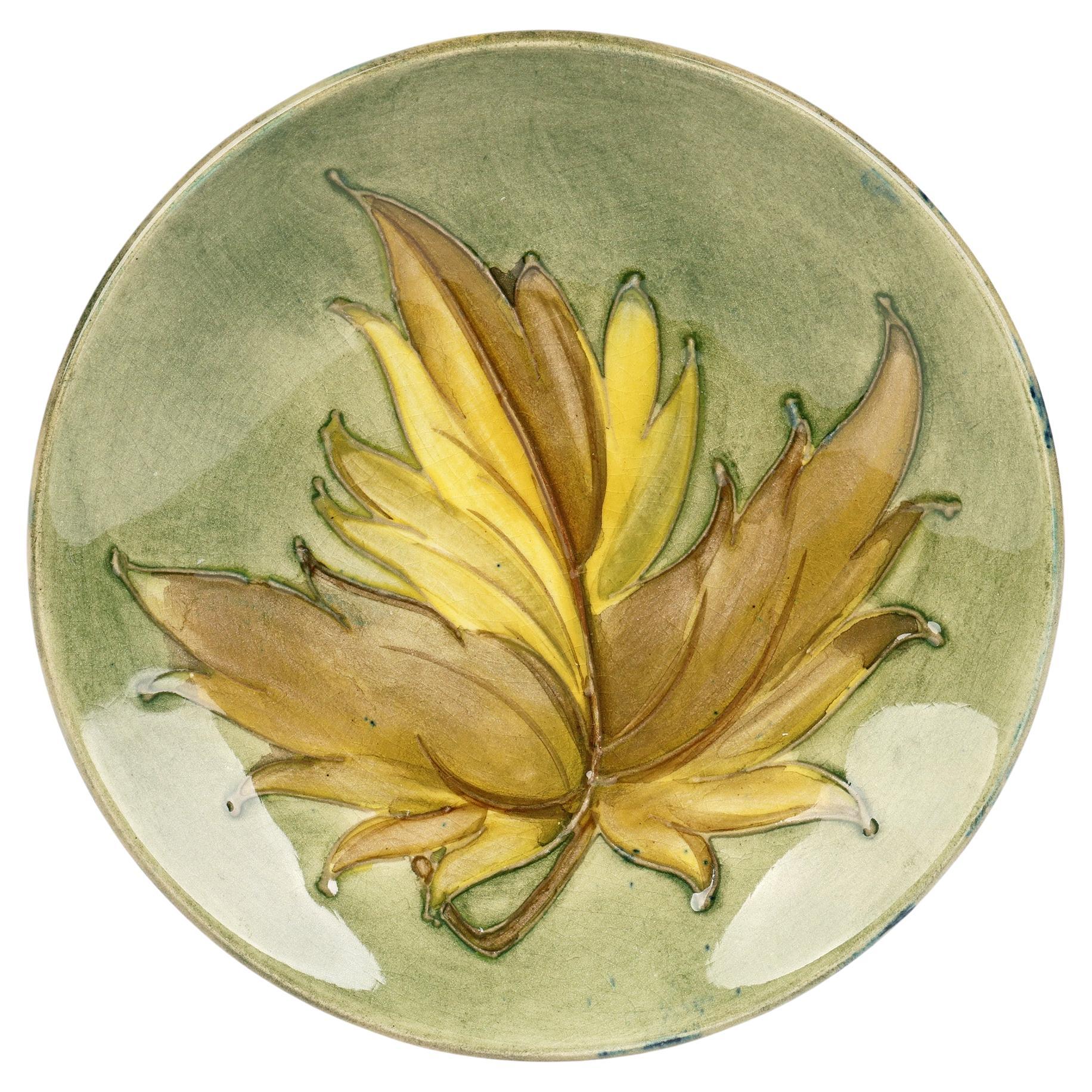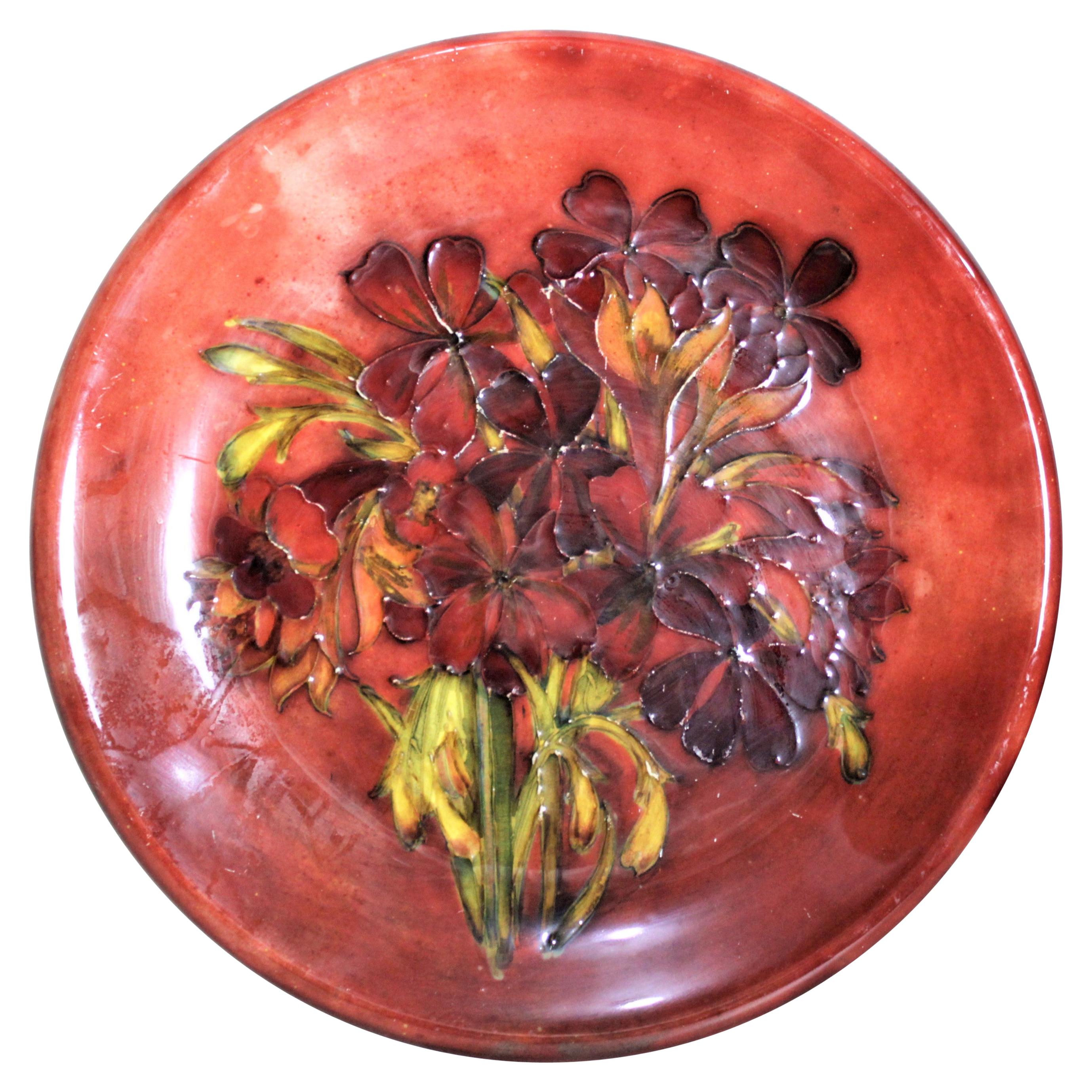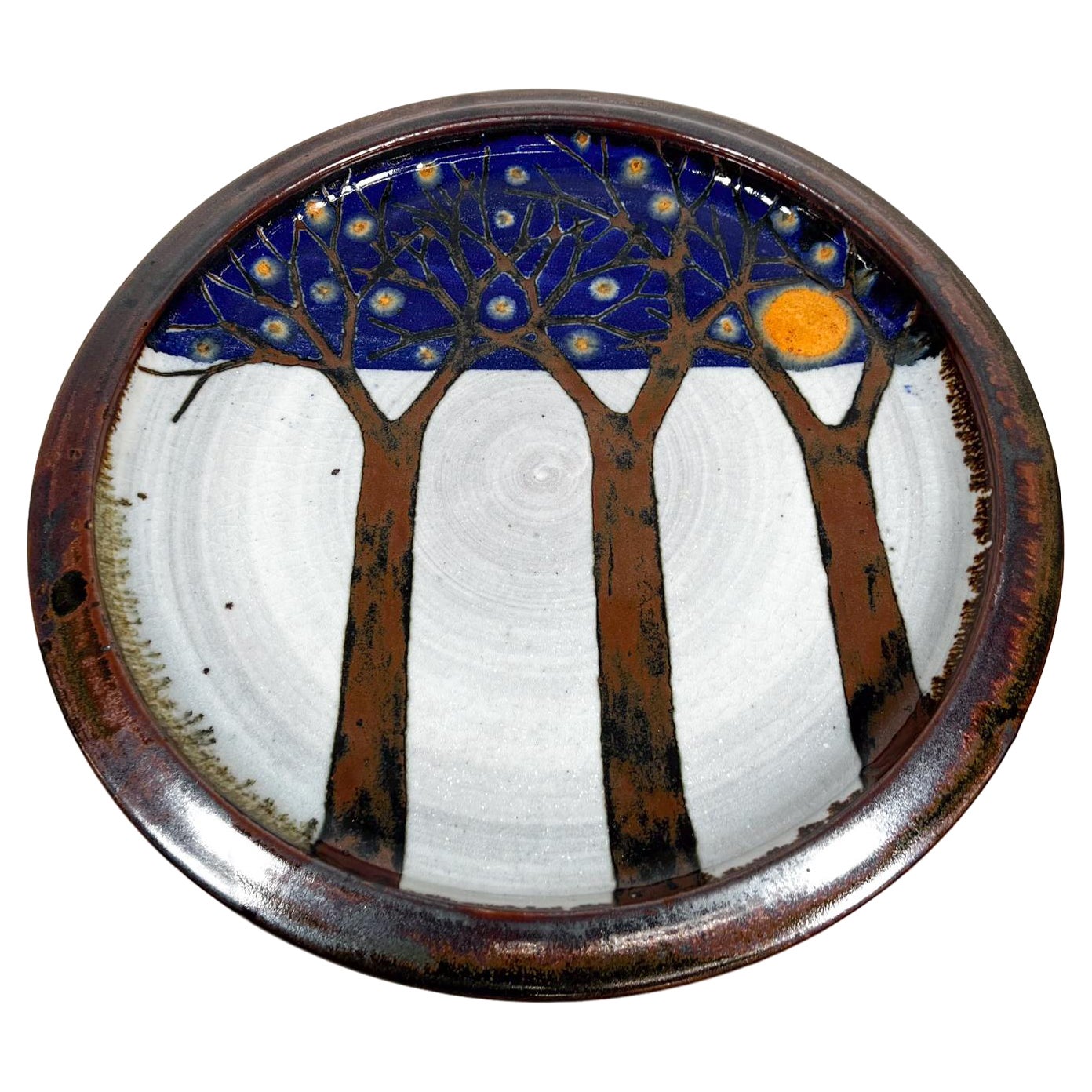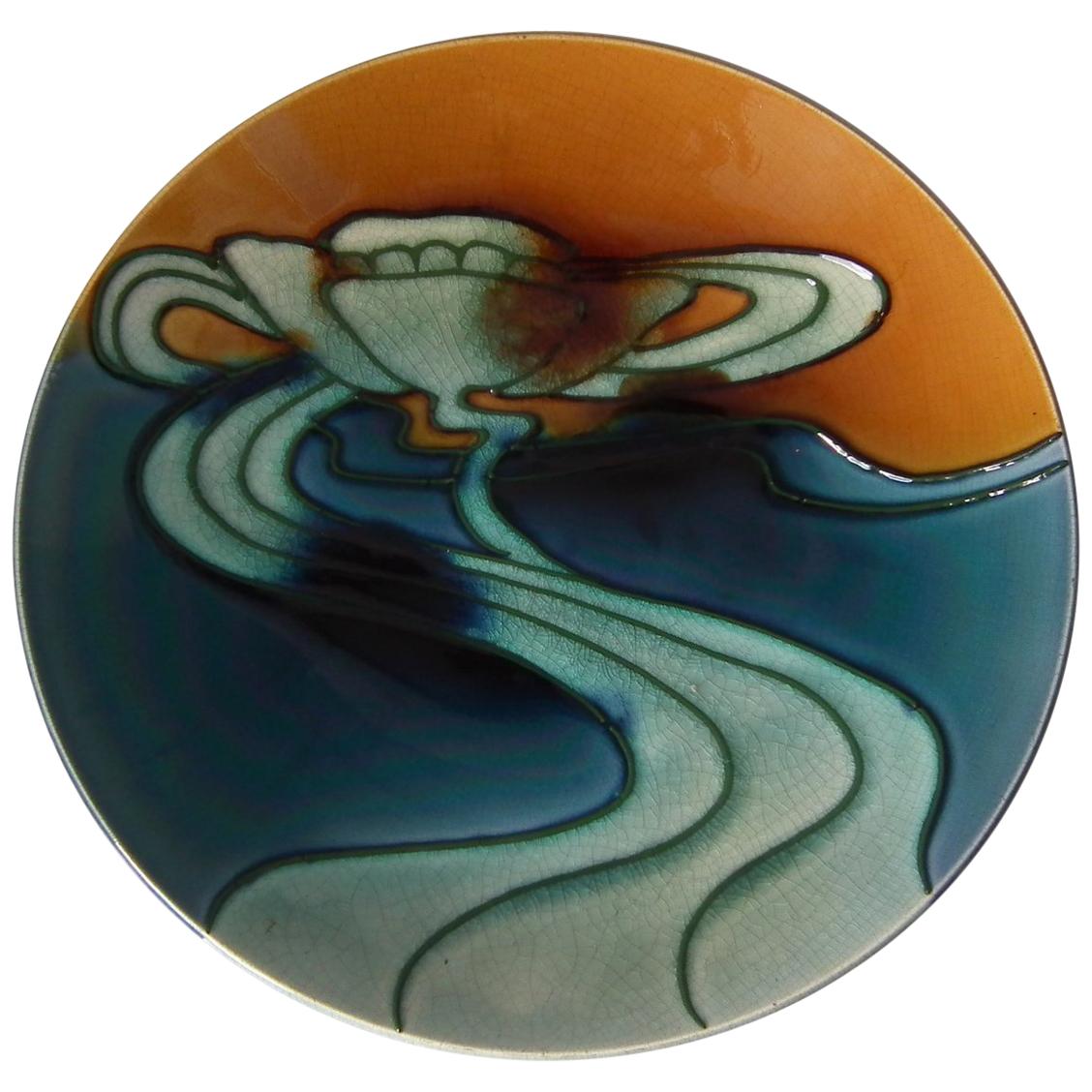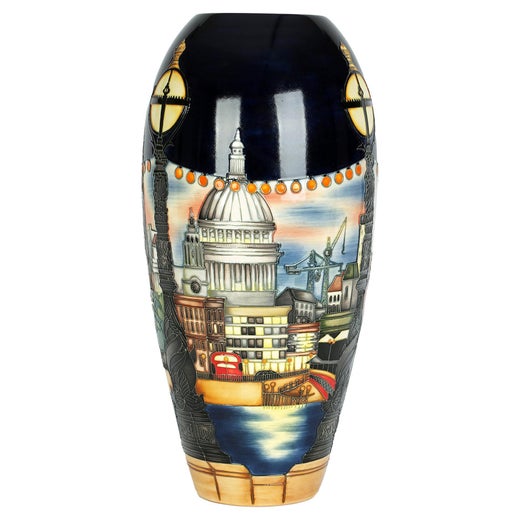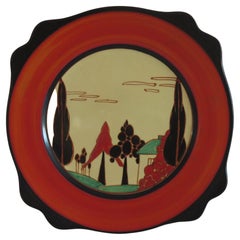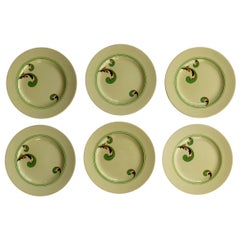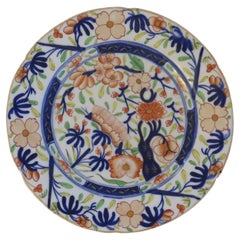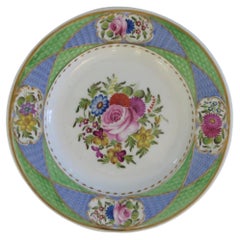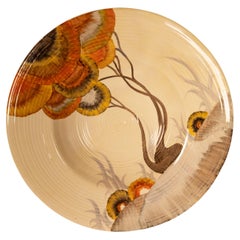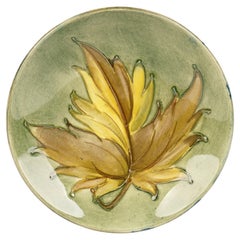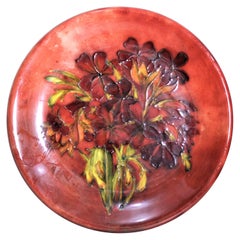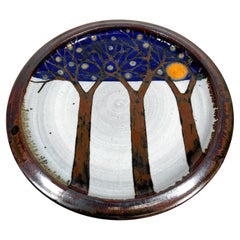Moorcroft Pottery Trial Plate in Daybreak Pattern by Nicola Slaney, 2017
About the Item
- Creator:Moorcroft Pottery (Manufacturer)
- Dimensions:Height: 1.6 in (4.07 cm)Diameter: 12.25 in (31.12 cm)
- Style:Modern (Of the Period)
- Materials and Techniques:
- Place of Origin:
- Period:
- Date of Manufacture:2017
- Condition:Very good condition. NO Damage.
- Seller Location:Lincoln, GB
- Reference Number:Seller: St 031stDibs: LU990326979362
Moorcroft Pottery
William Moorcroft (1872–1945), the founder of the celebrated British art-pottery company that shares his last name, was both an aesthete and a technical innovator. Along with William de Morgan, he is regarded as one of the greatest ceramists of the Arts and Crafts movement, yet Moorcroft’s singular style is heavily inflected with the lush naturalism of the Art Nouveau school of art and design.
The son of a decorative pottery painter, Moorcroft was born in Staffordshire, the center of English ceramics-making, studied at the Wedgwood Institute and in 1897 joined the local pottery manufacturer James Macintyre & Co. as a designer. After a year, he was put in charge of the company’s art-pottery studio, and there he developed a new style of wares named “Florian,” made with a technique called tube-lining, or slip-trailing. In this method, decorative motifs are outlined with a thin, raised border produced by piping a thread of clay onto the body of a vessel — much like squeezing toothpaste from a tube.
Moorcroft, who took the unusual step of signing his ceramics, would go on to win numerous international awards. In 1913, backed by the London department store Liberty & Co., he left Macintyre to open his own workshop. Queen Mary, wife of King George V, gave Moorcroft her Royal Warrant in 1928. Shortly before he died in 1945, his son, Walter Moorcroft (1917–2002), took over as head of the firm. The pottery company is still in business in Staffordshire, with a design department headed by Rachel Bishop.
William Moorcroft’s ceramics are noted for their colorful, ebullient (and often slightly surreal) decorations depicting stylized natural forms — flowers, toadstools, fruit (pomegranate is a favorite among collectors), insects and landscapes. Most Moorcroft wares are finished with a glossy overglaze. Blue-and-white and pastel shades were generally used as underglazes on early Moorcroft pieces, and he later developed a rich, ruddy background glaze he called “flambé.”
Moorcroft art pottery has a rich, warm and inviting look — a comforting aesthetic that explains their enduring appeal.
Find antique and vintage Moorcroft pottery, vases, serveware and more on 1stDibs.
- ShippingRetrieving quote...Shipping from: Lincoln, United Kingdom
- Return Policy
More From This Seller
View AllEarly 20th Century British Art Deco Pottery
Pottery
Mid-20th Century English Art Deco Platters and Serveware
Pottery
Antique Early 19th Century English George III Ceramics
Porcelain
Antique Early 19th Century English Georgian Ceramics
Porcelain
Antique Early 19th Century English Georgian Porcelain
Porcelain
Early 20th Century British Art Deco Pottery
Pottery
You May Also Like
Vintage 1930s English Art Deco Ceramics
Pottery
Vintage 1930s English Art Deco Ceramics
Ceramic
Early 20th Century English Art Nouveau Pottery
Pottery
Vintage 1980s Modern Decorative Dishes and Vide-Poche
Pottery
Antique Early 1900s German Art Nouveau Dinner Plates
Ceramic
Vintage 1910s English Art Nouveau More Dining and Entertaining
Pottery
